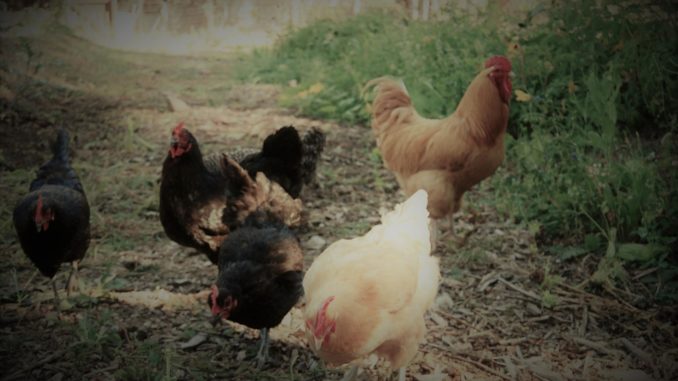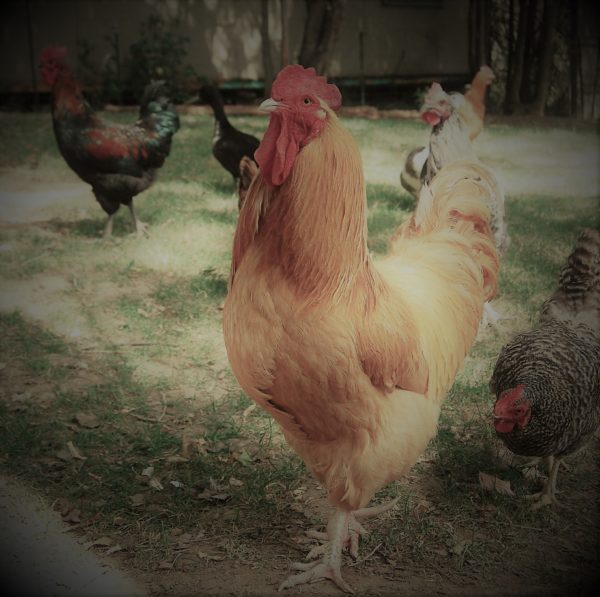
Gaia Grows
Kathleen Miller
Gaia’s Farm and Gardens
Sustainable living, gardening and farming is based on an understanding of ecosystems, the study of relationships between organisms and their environment. It has been defined as an integrated system of plant and animal production practices that will last over time. Having a harmonious relationship with Gaia (Mother Earth) provides food for people enhances the natural environment upon which the community depends, makes efficient use of resources and integrates natural cycles that sustain economic viability as well as enhances the quality of life for the community as a whole.
Photo by Kathleen Miller
Raising Sustainable Livestock
Grazing land, fertile soil for grain, and pursuing protein have made meat, milk, and eggs popular in the American diet. Our desire for beef financed the railroads that opened the West to intensive settlement. Over time, farmers have worked to make animals grow bigger, gain weight faster and produce more over the years. But these advances have not been without some consequences. Animals that are scientifically fed for fast growth do not have the flavor of ones that are fed a sustainable varied diet. Growth stimulating hormones and medicated feed may have long-term side effects that are still being discovered. And high productivity, meat, milk, and eggs are becoming increasingly expensive.
If you like animals, have a little extra space and can put in a little time daily, you can have farm fresh milk, meat, and eggs every day. You can also keep costs down by feeding discarded greens, stalks and crops that would otherwise go to waste and by turning unused land into pasture. Raising animals is difficult and may take only a short time each day, but you never get a day off when living with animals, but there is an abundance of rewards which include watching your animals grow each day.
Cleanliness is the biggest factor in livestock health. Feeding and shelter requirements vary from one farm animal to another, but all require good management practices to stay in good health. It is best, to begin with, good planning. Be sure the feeding and watering equipment is in good condition and protected from contamination and that their shelter is easy to access and clean. If you have a pasture, it should be free of wet boggy areas, poisonous weeds, and dangerous debris. Use fencing and traps to protect your animals from rodents, and guard against flies by installing screens. Daily care is important also with animals. Wash equipment after each use, keeping bedding dry and clean and check animals daily for early signs of illness or injury.
Once or twice each year thoroughly scrub and disinfect your animals’ shelter. Make sure you take all the old bedding to the compost pile and replace it with some that is fresh, clean and dry. Take all equipment outside, wash it thoroughly, and let it dry in the sun. Sunlight is an excellent disinfectant. Scrub the inside of the animal housing with a stiff-bristled brush to remove caked on dirt, then go over everything again with a disinfectant made for use with livestock. Follow the instructions that come with the disinfectant and allow adequate drying time before letting the animals back into their shelter.
Keep strange animals away from your livestock. If you buy a new animal, keep it quarantined until you are sure it is healthy. If you need to take an animal to a livestock show, isolate it for a while when you return before you reintroduce it into the herd. Some farmers pen new animals with a member of the established herd to be sure the new ones are not symptom-free disease carriers. If they are, only a single animal need be lost, not the entire herd. A clean environment is the best way to guarantee healthy, productive and attractive livestock for your sustainable farm.
Good record keeping is essential if you want to know if your animals are paying their way on your farm. Keep track of all expenses, including veterinary bills and write down exactly how much feed you provide each day and cost of feed each day. Also, keep track of each animals’ productivity and how many offspring each animal produces. Maintaining records is not a time-consuming chore. The best system is to keep a notebook or a box of file cards near your animals’ shelter. This will also increase the worth of your animals you sell.
Before buying animals, learn as much as you can about the care of farm animals. Books, breeders’ magazines, and USDA publications are very helpful. Talk to your county extension agent and other knowledgeable people. Attend shows and exhibits to learn what distinguishes good livestock qualities of the breed you want to raise. Check the costs of feed, equipment, fencing, and building materials. Be sure to get a veterinarian that will treat your animals in case of illness or emergency. If you are interested in selling, find out what markets are available and what laws there are for the product you are trying to sell and what price it is likely to bring.
Before you make a commitment check to determine they permit whether farm animals in your area. Be sure you have ample space and clean, sanitary shelter. If you plan to range-feed, make sure your pasture is of sufficiently high quality. It can take years to develop top quality grazing land, and if yours is not, you will have to buy hay for your animals and that can get expensive.. Before the animals arrive you should have all the necessary equipment, such as feed pans, milk pails, watering troughs, halters, and grain storage bins. You should also be prepared to store what your animals produce whether that be milk or eggs.
Photo by Kathleen Miller

Support Northern Colorado Journalism
Show your support for North Forty News by helping us produce more content. It's a kind and simple gesture that will help us continue to bring more content to you.
BONUS - Donors get a link in their receipt to sign up for our once-per-week instant text messaging alert. Get your e-copy of North Forty News the moment it is released!
Click to Donate
